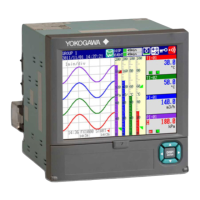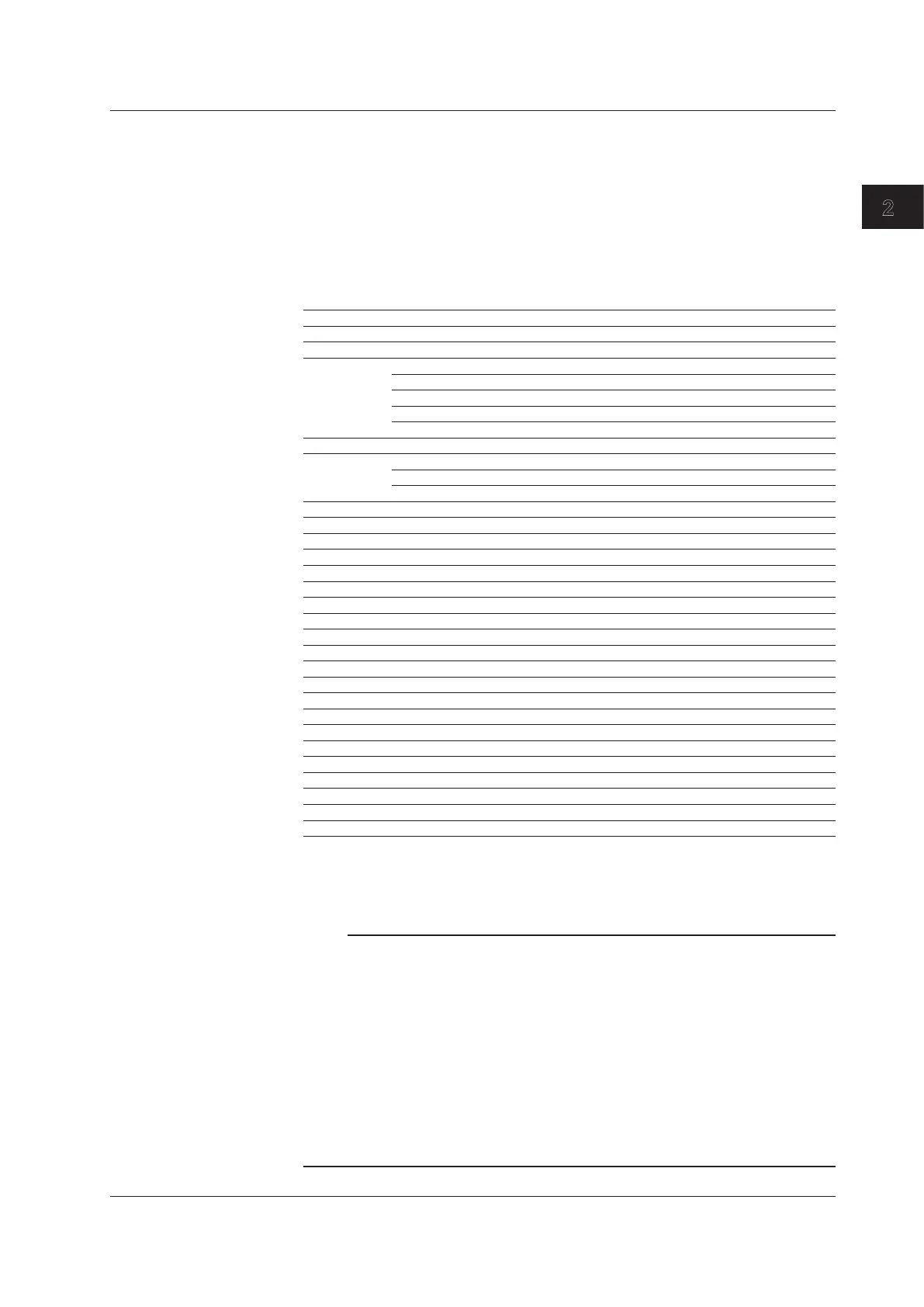Common Operations
IM 04L42B01-01E
2-23
2
• HowtoUse
Follow the standard operating procedure for the barcode reader that you are using.
Operate the barcode reader while checking the status of the DX. An operation can be
carried out using the barcode reader when it can be carried out on the DX.
Commands
Scan the communication commands encoded in bar codes to operate the DX with
a barcode reader. The communication commands that you can use are listed in
the table below. For information about communication command syntax, see the
Communication Interface User’s Manual, IM 04L41B01-17E.
Command Description
KE Performs key operations
PS Starts or stops memory sampling
EV Starts manual sampling
Causes triggers to occur
Takes snapshots
Saves display data
Saves event data
MS Writes messages
TL Starts or stops computation
Resets computation
Clears the computation data dropout display
IR Resets the relative timer
AK Releases alarm output (alarm ACK)
CV Switches the trend interval
EM Starts or stops e-mails
CU Manually recovers the Modbus master or client
BJ Writes free messages
BV Inserts characters
BT Sets batch names
BU Sets batch comments
CL Executes manual SNTP
LO Reads the setting mode setup data
LI Saves setup data
MA Resets the single match time timer
YC Clears measured and computed data and initializes setup data
EJ Changes login passwords
YO Loads setup files (for basic setting mode)
UD Switches the screen
MH Writes batch text fields (release numbers 4 and later)
BP Enters login information (/AS1 option; release numbers 4 and later)
BQ Invalid user ACK operation (/AS1 option; release numbers 4 and later)
EC Initialization (/AS1 option; release numbers 4 and later)
CommandExample
The command to write message number 8 in group 1 is: MS8,GRPUP,1. There must
be a terminator (an enter key code) at the end.
Note
• Youcanreadmultiplecommands(asmanyas10)byputtingsubdelimiters(semicolons)
between them.
Example: PS0;MS8,GRPUP,1
• Whenyouentercommandsusingbarcodes,youcanenterthemseparatedorallat
once. You can separate commands however you want to. For example, you can separate
the command to write message number 8 in group 1, MS8,GRPUP,1, into the following
components: MS > 8 > , > GRPUP > , > 1 > ENTER key code.
• Ifyouuseabarcodereaderthatautomaticallyattachesafooterandaheadertoevery
transmission, the result will be the same if MS is set to the header, the enter key code is set
to the footer, and you scan 8,GRPUP,1.
• WhentheDXreceivesanunsupportedkeycode,itclearsallofthekeycodesthatithas
accumulated so far.
2.11ControllingtheDXwithaKeyboardorBarcodeReader(/USB1Option)

